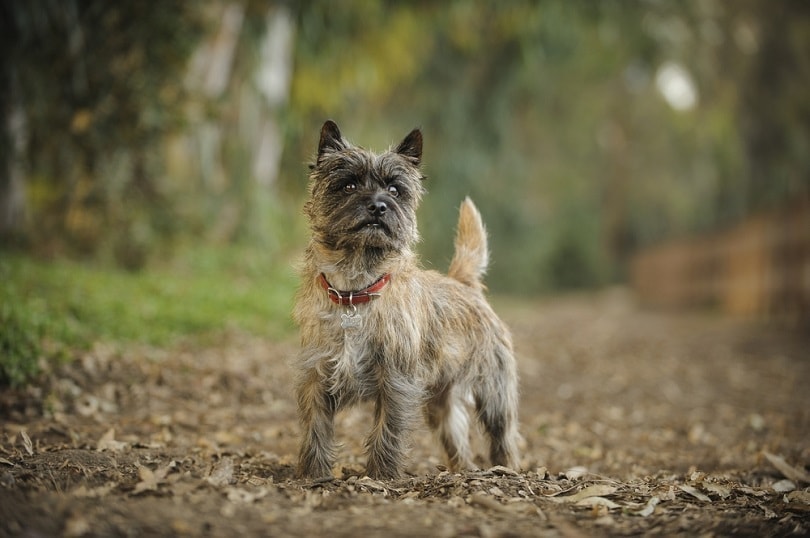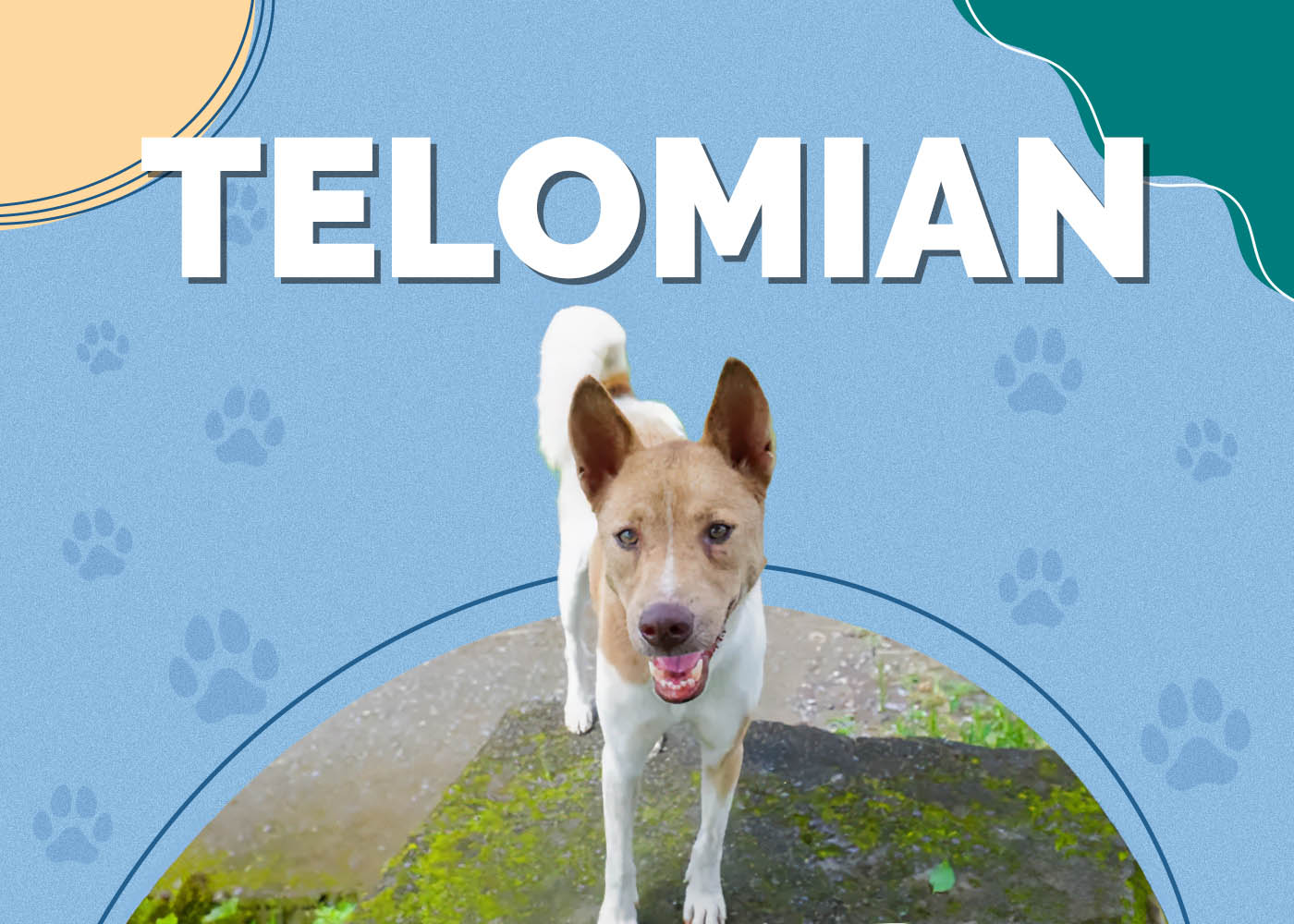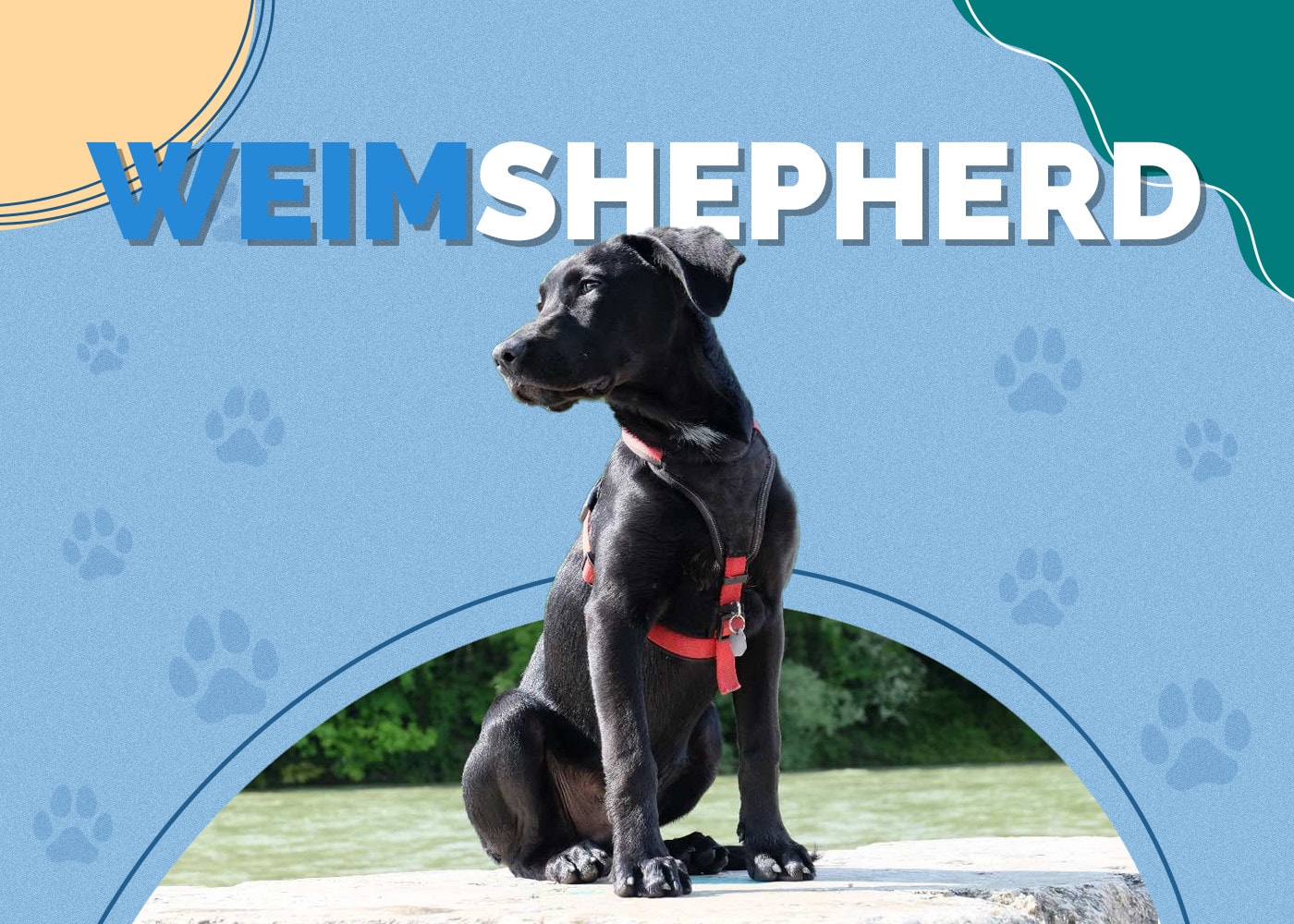Anatolian Shepherd vs Kangal: Which Dog to Choose?

Updated on
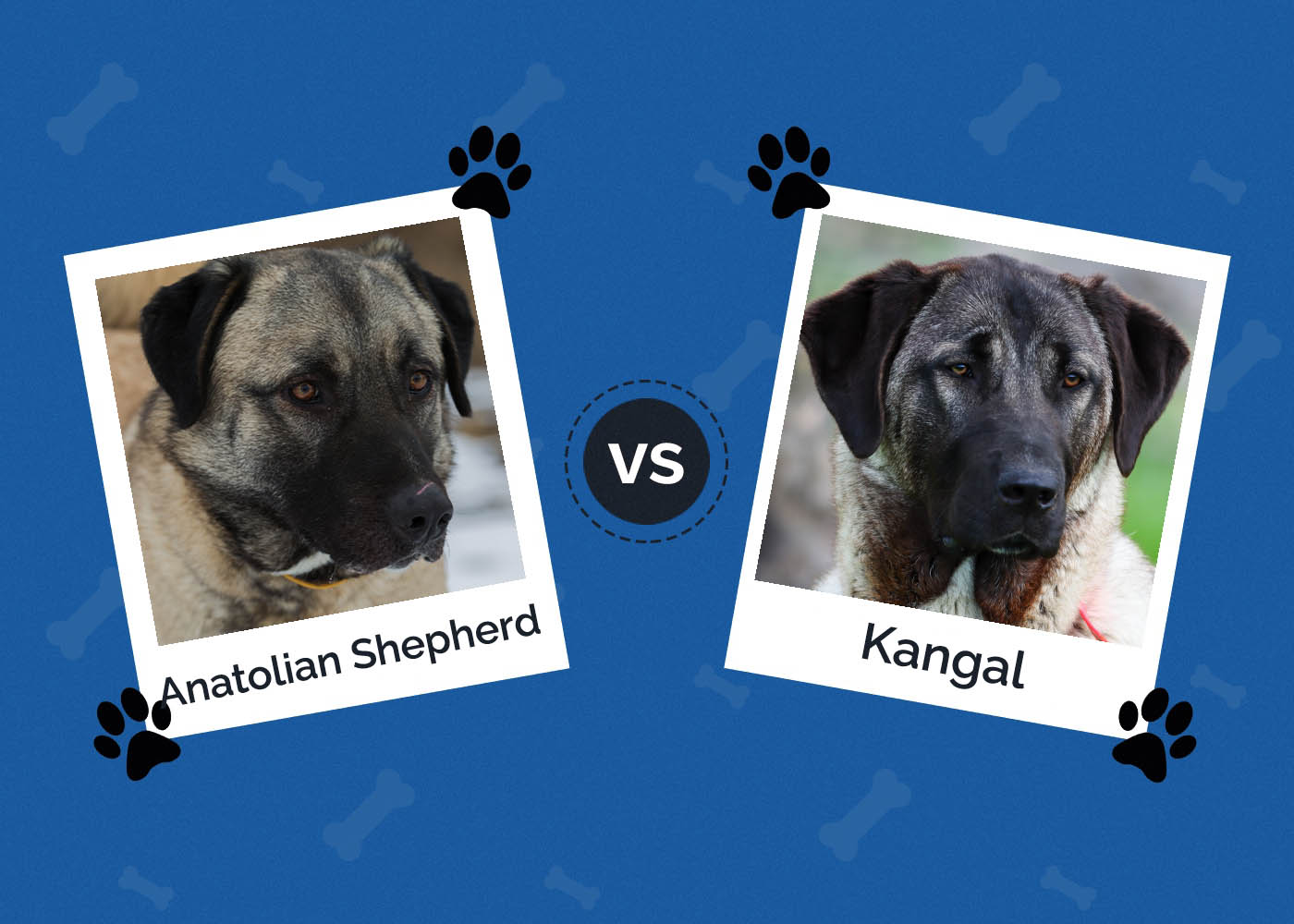
The Anatolian Shepherd and the Kangal may look identical, but these two dog breeds have many differences. One is better at being a livestock guardian, while the other makes a fantastic family dog. However, both are extremely protective guard dogs.
So, what are the differences between these two breeds? Which one is a better fit for your lifestyle?
We’ll explore the similarities and differences between the Anatolian Shepherd and the Kangal so you can choose the best one for you.
Visual Differences
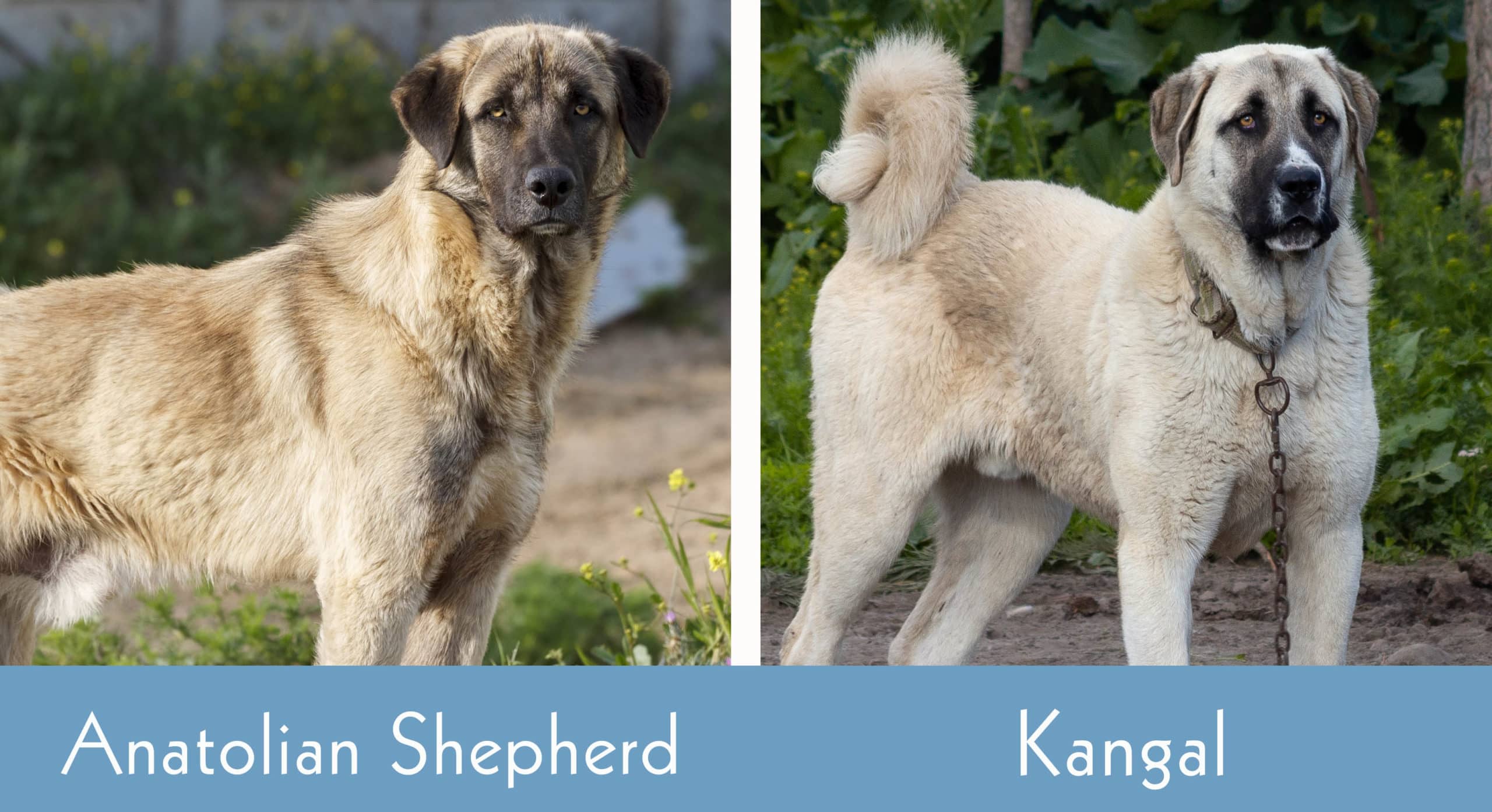
A Quick Overview – Anatolian Shepherd vs Kangal
- Average Height (adult): 27-29 inches
- Average Weight (adult): 80-150 pounds
- Lifespan: 11-13 years
- Exercise: High needs, outdoor space necessary
- Grooming needs: Moderate
- Family-friendly: Yes
- Dog-friendly: Sometimes
- Trainability: Challenging but necessary
- Average Height (adult): 28-32 inches
- Average Weight (adult): 90-145 pounds
- Lifespan: 12-15 years
- Exercise: Moderate to high needs, love outdoors
- Grooming needs: Moderate
- Family-friendly: Yes
- Dog-friendly: Often
- Trainability: Difficult
Anatolian Shepherd
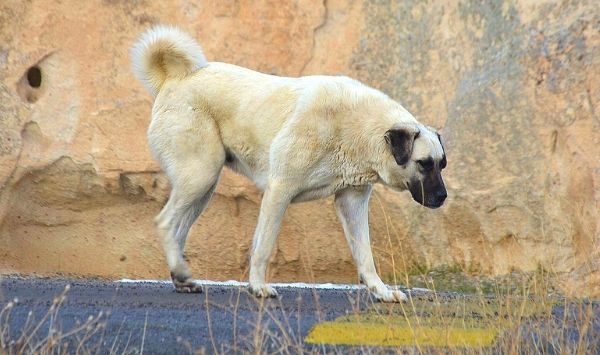
The Anatolian Shepherd is a livestock guardian breed that originated in Turkey around 4,000 B.C. It was recognized by the American Kennel Club (AKC) in 1999. The breed is known for its strength, loyalty, and ability to defend its family and livestock at all costs.
These intelligent dogs make great guardians, and they will protect everything from children to the family cat.
Characteristics
Anatolian Shepherds are large, muscular guardians that were bred to defend livestock from predators, including wolves!
- Males: 29 inches; 110-150 pounds
- Females: 27 inches; 80-120 pounds
Life Expectancy : 11-13 years
Coat Colors
The classic coat color for the Anatolian Shepherd is fawn with a black mask, but they can also have coats in white, brindle, blue fawn, white and biscuit, red fawn, and liver.
Temperament
Anatolian Shepherds are protective, loyal, and stubborn. They make fantastic livestock guardians because they are intelligent enough to think for themselves. They are also dominant and self-reliant, which makes them difficult to train.
The Anatolian Shepherd is not a very friendly dog, especially to strangers. The breed tends to be serious and reserved, though not overly aggressive. However, the Anatolian Shepherd is affectionate with their humans, including children.
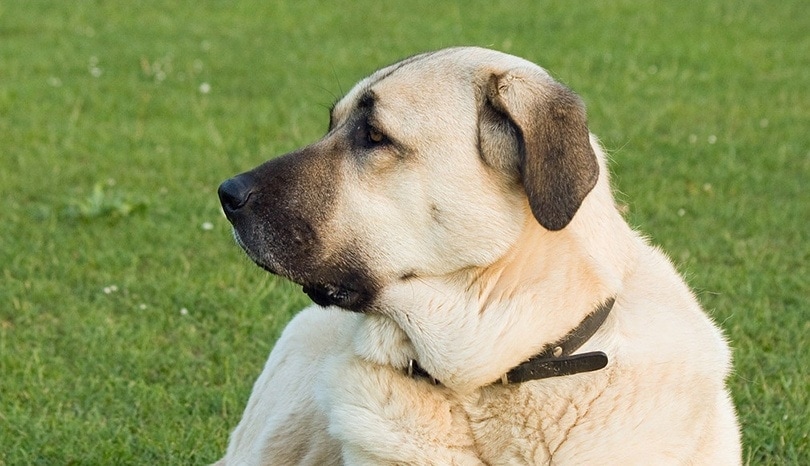
Grooming
The Anatolian Shepherd has a thick undercoat to protect it from the elements while working outside. The outer coat is typically short and only requires weekly brushing. This breed does shed heavily twice a year when it loses its undercoat, though.
Exercise
An Anatolian Shepherd needs a good-sized yard to exercise in every day. It also requires at least a 6-foot-high fence to keep it contained. This breed can become destructive if not given enough exercise, but it’s an extremely agile and strong dog, so it can do many different jobs.
Training
Because Anatolian Shepherds tend to be wary toward strangers and instinctively protective, puppies need early socialization. Obedience training is a must with this breed, and the dog requires a confident, dominant owner. Training can be a challenge, though, because the dog was bred to work independently, make decisions on their own, and protect the flock. They are not a dog who responds to commands easily.
Special Considerations
Anatolian Shepherds are protective, intelligent, and loyal dogs. With these traits come special considerations to think about before you welcome one of these dogs into your home.
Stranger Danger
If you don’t properly socialize your Anatolian Shepherd, the dog will not easily be able to tell “good guys” from “bad guys.” This means that the dog will constantly be wary and possibly even aggressive toward strangers. They tend to be suspicious of everyone outside of their family, which can be challenging when you have visitors.
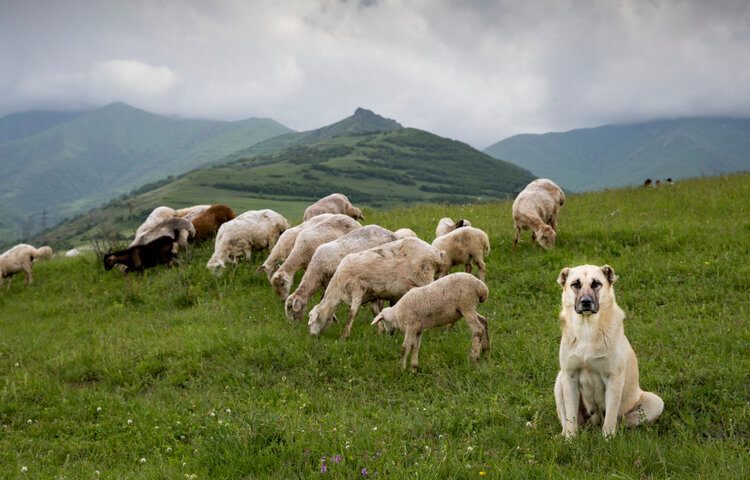
Mental Stimulation
Anatolian Shepherds need a job or something constructive to do, or they can become incredibly destructive to your house and yard. This breed does best as a livestock guardian, but not so much as a family dog.
Noisy and Loud
The Anatolian Shepherd has a loud, booming bark that can sound more like a roar when it senses danger. This loud bark often occurs at night when the dog is at its most vigilant, which can be frustrating for your neighbors.
Other Dogs and Pets
This breed can be aggressive toward other animals. They are usually tolerant of other dogs and pets that they’ve been raised with, as long as those animals are submissive. Otherwise, an Anatolian Shepherd can be dangerous toward strange dogs and small animals.
 Kangal
Kangal
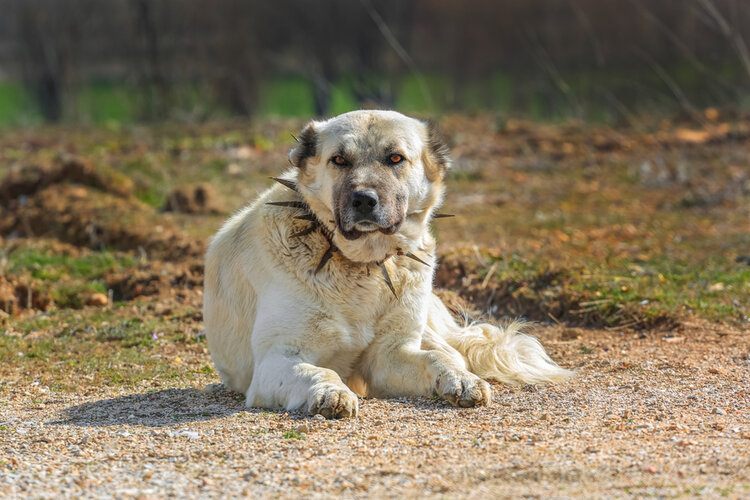
Though the Kangal is often mistaken for the Anatolian Shepherd, the dogs are two separate breeds. The Kangal also came from Turkey and was bred around 700 A.D. They are only recognized by the United Kennel Club. The export of purebred Kangal dogs from Turkey has been virtually forbidden. The Kangal is also the National Dog of Turkey.
Characteristics
The Kangal dog is slightly taller than the Anatolian Shepherd and was bred to guard flocks of sheep from large predators such as wolves and bears.
- Males: 30-32 inches; 110-145 pounds
- Females: 28-30 inches; 90-120 pounds
Life Expectancy: 12-15 years
Coat Colors
According to the United Kennel Club, the Kangal Dog is always a solid color, such as light dun, pale gold, or steel gray. The dog always has a black mask and ears. The only white spots are on the feet, chest, or chin.
Temperament
Kangals were bred to be calm, peaceful, and loyal. They are gentle with the humans in their family, including children. They’re also bred to be trustworthy around sheep and other livestock. Kangals are alert and protective without being aggressive.
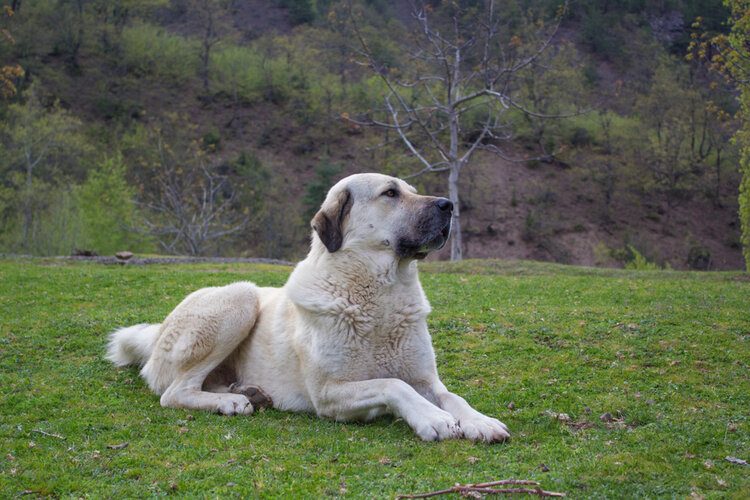
Grooming
This breed has a short, dense double-coat to protect it from the elements while it works outside. Kangals shed twice a year in spring and winter. During that time, they will need help removing all the dead hair with a good de-shedding tool. The coat also sheds throughout the year, which isn’t a problem when Kangals are kept outside, but an indoor dog will get hair all over your home.
Exercise
Kangals need at least 45 minutes of exercise per day, preferably in a yard with several acres. The dog was bred to patrol, so they like to make perimeter checks around your yard. This breed is athletic and active, but they are not a high-energy dog. As long as it has plenty of room to roam, patrol, and run, they will be happy and healthy.
Training
Kangals need early socialization, as they do not respond well to obedience training. These dogs were bred to be independent and intelligent, and they will naturally guard and protect your livestock.
Special Considerations
Kangals, like other livestock guardian dogs, require special considerations before you bring one of these intelligent, loyal dogs to your home.
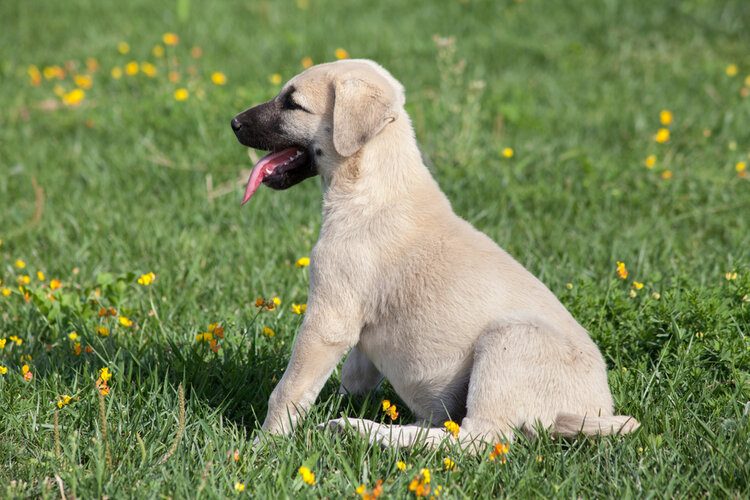
High Fences
Kangals need to know the limits of the property they’re patrolling or they will continue to roam in places you won’t want it to be (like the neighbor’s yard). They can jump high and dig out, so a 6-feet high fence and wire that extends underground are necessary to keep this dog contained.
Powerful Guardians
The Kangal Dog was bred to guard against large predators like wolves and bears. Though they’re gentle with their family, the Kangal is quite powerful and can reach speeds of 30 miles per hour. The Anatolian Shepherd’s bite force is 700 PSI, which is three times that of a Pitbull.
Noisy
Kangals primarily bark to intimidate predators, and their barks are loud and booming. Sometimes they even sound like a roar. This can be disturbing to neighbors, especially if you don’t have many acres to lessen the sound.
Final Thoughts
Both the Anatolian Shepherd and Kangal are incredibly intelligent, independent, and superior livestock guardian dogs. Neither makes a great family dog. They were bred to take care of livestock, and that’s what they do best.
Though they look similar, when comparing the Anatolian Shepherd vs Kangal, the Kangal is the more gentle of the two. It’s a calmer, more peaceful dog around family and children. Anatolian Shepherds may be easier to find in the U.S. because Kangals aren’t allowed to be exported from Turkey.
If you have many acres and livestock to protect and you aren’t looking for a family dog who lives in the home with you, then both breeds will make great guardians.
Related Reads:
- Silver Lab vs Weimaraner: What’s the Difference?
- Great Pyrenees vs Golden Retriever: Which One to Choose?
Featured Image Credit: (L) CharlitoCZ, Shutterstock | (R) K.Bry, Shutterstock


 Kangal
Kangal
